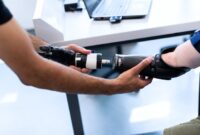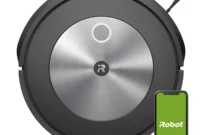In the rapidly advancing field of unmanned aerial vehicles (UAVs), one category of drones has been gaining significant attention for its diminutive size and remarkable capabilities. Nano drones, as the name suggests, are incredibly small drones that have opened up a new realm of possibilities in various industries and everyday life. In this article, we will explore the fascinating world of nano drones, their technology, applications, and future prospects.

1. Introduction
In recent years, drones have revolutionized industries such as photography, agriculture, and surveillance, among others. However, their size and maneuverability have often posed limitations in certain scenarios. Nano drones offer a solution to these challenges by being extremely compact yet powerful enough to perform a range of tasks. Let’s delve deeper into the world of nano drones to understand their capabilities and potential.
2. What are Nano Drones?
2.1 Definition and Features
Nano drones are unmanned aerial vehicles that typically measure less than six inches in diameter and weigh a few ounces. These tiny marvels often incorporate advanced technologies such as microprocessors, miniature sensors, and lightweight materials to achieve their impressive performance. Despite their small size, nano drones can be equipped with high-resolution cameras, sensors for environmental monitoring, and even payload-carrying capabilities.
2.2 Applications
The applications of nano drones span across various industries, including surveillance and security, agriculture and farming, delivery and logistics, photography and filmmaking, recreational use, and educational purposes. Their small form factor enables them to access confined spaces, navigate tight areas, and gather data in environments that would otherwise be challenging for larger drones or humans.
2.3 Advantages and Limitations
Nano drones offer several advantages over their larger counterparts. Their compact size allows for easy transportation and deployment in various scenarios. They are cost-effective, consume less power, and can be controlled remotely or programmed to operate autonomously. However, their miniature size also comes with limitations, such as shorter flight times, limited payload capacity, and reduced stability in windy conditions.
3. Nano Drone Technology
Nano drones rely on cutting-edge technology to achieve their impressive functionality. Let’s explore the key aspects that make these tiny aircraft capable of performing complex tasks.
3.1 Miniaturization and Design
One of the significant challenges in developing nano drones is miniaturizing the components without compromising performance. Advanced engineering techniques and the use of lightweight materials contribute to the creation of compact yet robust drones. Design considerations, such as foldable or modular structures, further enhance portability and adaptability.
3.2 Power and Propulsion
Nano drones require efficient power sources and propulsion systems to enable sustained flight. Miniature batteries, such as lithium-polymer (LiPo) cells, provide the necessary energy while keeping the weight to a minimum. Propellers or rotors powered by electric motors generate the thrust required for controlled flight.
3.3 Sensors and Navigation
Nano drones are equipped with a range of sensors to perceive their environment and navigate autonomously or under human control. These sensors may include accelerometers, gyroscopes, magnetometers, and altitude sensors. Additionally, advancements in GPS and computer vision technology have further improved the navigation capabilities of nano drones.
4. Industrial and Commercial Uses
The compact size and versatility of nano drones have led to their adoption in various industrial and commercial settings. Let’s explore some of the key applications where these tiny tech marvels are making a significant impact.
4.1 Surveillance and Security
Nano drones offer enhanced surveillance capabilities in areas where traditional cameras or personnel face limitations. Law enforcement agencies, security firms, and emergency responders utilize these drones for monitoring crowds, traffic surveillance, search and rescue operations, and inspecting critical infrastructure.
4.2 Agriculture and Farming
In agriculture, nano drones are used for crop monitoring, precision spraying of pesticides or fertilizers, and collecting data for yield optimization. These drones can quickly survey vast fields and provide valuable insights to farmers, allowing them to make data-driven decisions and improve crop productivity.
4.3 Delivery and Logistics
With the rise of e-commerce and the need for efficient delivery services, nano drones are being explored as potential delivery agents. Their small size and agility enable them to navigate congested urban areas and reach destinations quickly. While the technology is still in its early stages, it holds promise for the future of last-mile delivery.
5. Nano Drones in Everyday Life
Beyond industrial and commercial applications, nano drones have found their way into everyday life, offering unique possibilities for individuals and communities. Let’s explore some of these exciting use cases.
5.1 Photography and Filmmaking
Nano drones equipped with high-resolution cameras have become popular tools for aerial photography and filmmaking enthusiasts. They allow for stunning aerial shots, perspectives, and creative angles that were once only possible with expensive professional equipment. These drones enable photographers and filmmakers to capture breathtaking visuals without the need for helicopters or cranes.
5.2 Recreational and Hobbyist Use
For hobbyists and recreational users, nano drones offer a fun and engaging experience. These drones are often equipped with features like obstacle avoidance, acrobatic flight modes, and intuitive controls, making them accessible to beginners and experienced pilots alike. Flying nano drones in parks or open spaces has become a popular pastime for many enthusiasts.
5.3 Educational and STEM Applications
Nano drones play a crucial role in fostering interest and learning in science, technology, engineering, and mathematics (STEM) fields. Educational institutions use them to teach principles of flight, programming, and robotics. Students can explore aerodynamics, electronics, and coding by building and operating these drones, thereby developing valuable skills for the future.
6. Future Developments and Challenges
While nano drones have demonstrated immense potential, several challenges and considerations lie ahead in their widespread adoption and further advancements.
6.1 Regulatory and Safety Concerns
As with any new technology, regulations and safety guidelines must keep pace with the rapid advancements in nano drone technology. Authorities need to address concerns regarding privacy, airspace regulations, and potential misuse. Striking the right balance between innovation and safety is crucial for fostering responsible and ethical use of nano drones.
6.2 Battery Life and Flight Time
The limited size of nano drones poses challenges in terms of battery capacity and flight time. Despite advancements in battery technology, the energy density of miniature batteries remains a limiting factor. Extending the flight time of nano drones without compromising their compact size continues to be a focus of research and development.
6.3 Autonomous Navigation and AI Integration
Further advancements in autonomous navigation and artificial intelligence (AI) integration are expected to enhance the capabilities of nano drones. Intelligent algorithms can enable nano drones to navigate complex environments, avoid obstacles, and make real-time decisions. These advancements would unlock new applications and improve the overall efficiency and safety of nano drone operations.
7. Conclusion
Nano drones have emerged as remarkable technological marvels, pushing the boundaries of what was once thought possible in unmanned aerial vehicles. Their compact size, advanced technology, and versatile applications have made them valuable tools in industries ranging from surveillance and agriculture to photography and education. As the technology continues to evolve, addressing challenges and ensuring responsible use will be vital to unlocking the full potential of these tiny tech wonders.
FAQs
1. How small can nano drones get? Nano drones typically measure less than six inches in diameter, but further advancements may lead to even smaller sizes, depending on the specific application requirements.
2. Are nano drones legal to fly? The legality of flying nano drones depends on the local regulations and airspace restrictions in your region. It is important to familiarize yourself with the rules and obtain any necessary permissions or licenses before flying a nano drone.
3. Can nano drones carry payloads? Yes, nano drones can be designed to carry payloads such as small cameras, sensors, or lightweight objects. However, the payload capacity is limited due to their small size and weight constraints.
4. What are the risks of nano drones? Some of the risks associated with nano drones include privacy concerns, potential accidents or collisions, and misuse for illegal activities. Adhering to safety guidelines, respecting privacy, and flying responsibly can help mitigate these risks.
5. How do nano drones differ from traditional drones? Nano drones are distinguished by their compact size and lightweight design, which enable them to access confined spaces and perform tasks in environments where larger drones may be impractical. Traditional drones are typically larger and offer longer flight times and greater payload capacity, but may not be as maneuverable or versatile in tight spaces.


